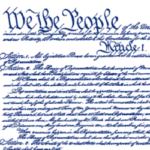This unit on civics fosters critical thinking skills in students as they engage with topics in government, democracy, and U.S. history, providing comprehensive lesson plans that encourage deep analysis, evaluation, and reflection on the principles and dynamics of civic life.
Election of 1860: Slavery Splits the Democrats
This four-minute video explores the causes and consequences of the Democratic Party’s division into two parties following the Democratic national convention of 1860. After rejecting Stephen A. Douglas’s failed attempt to reconcile the Northern and Southern factions of the party with his doctrine of “popular sovereignty,” the Southern delegates walked out of the convention. That decision led to the election of Abraham Lincoln, the Civil War, and 50 years of Republican dominance in national politics. A concise summary of the unusual events that allowed Abraham Lincoln to win the election of 1860, the video fits into any sequence of lessons on the factors leading to secession and the Civil War.
Congress and the Constitution
Use this information graphic to easily understand the House of Representatives and Senate and the articles and amendments in the Constitution.
Federalism
“Federalism” is the word used to describe the Constitution’s system of dividing political power between the national government and the states. What is federalism and how does it work? Why did the founders build federalism into our constitutional system and what are the modern debates over federalism today? Explore the National Constitution Center’s Federalism learning module to learn more!
The Constitution
This series of videos breaks down the different parts of the United States Constitution for students. In the videos, Kim and Sal interview constitutional scholars associated with the National Constitution Center, including Jeffrey Rosen, Heather Gerken, Ilya Somin, and Richard Garnett.
Constitution Clips
C-SPAN’s Constitution Clips makes the U.S. Constitution come alive by providing teachers and students with video clips from C-SPAN’s Video Library of the Constitution in action.
The Constitutional Convention: Fine Tuning the Balance of Powers
History is the chronicle of choices made by actors/agents/protagonists in specific contexts. This simulation places students in the midst of the Constitutional Convention, after the Committee of Detail has submitted its draft for a new Constitution on August 6. With that draft’s concrete proposals on the floor, students will ponder questions such as: Is this the Constitution we want? Are the people adequately represented? Are the branches well structured? By engaging with these questions mid-stream, before the Convention reached its final conclusions, students will experience the Constitutional Convention as process, a supreme example of collective decision-making.
Constitution of the United States with Index and the Declaration of Independence, Pocket Edition

This is the 25th pocket edition of the complete text of two core documents of American democracy, the Constitution of the United States (with amendments) and the Declaration of Independence. The resolution calling for the ratification of Constitutional Convention is also included. A topical index to the Constitution is provided. (House Document 112-29, 2012)
Chamber of Commerce v. Whiting (2011)
Is the Legal Arizona Workers Act invalid under the Immigration Reform and Control Act? This case summary shows how the Supreme Court answered that question in 2011.
The Fourth Branch: YOU! (Lesson Plan)
Students learn how citizens can influence the government. They measure the impact of their “citizen power” on each of the three branches and learn how to target the right government official with their concerns. (Note: This lesson will be most effective if students have some background knowledge of the three branches of government.)